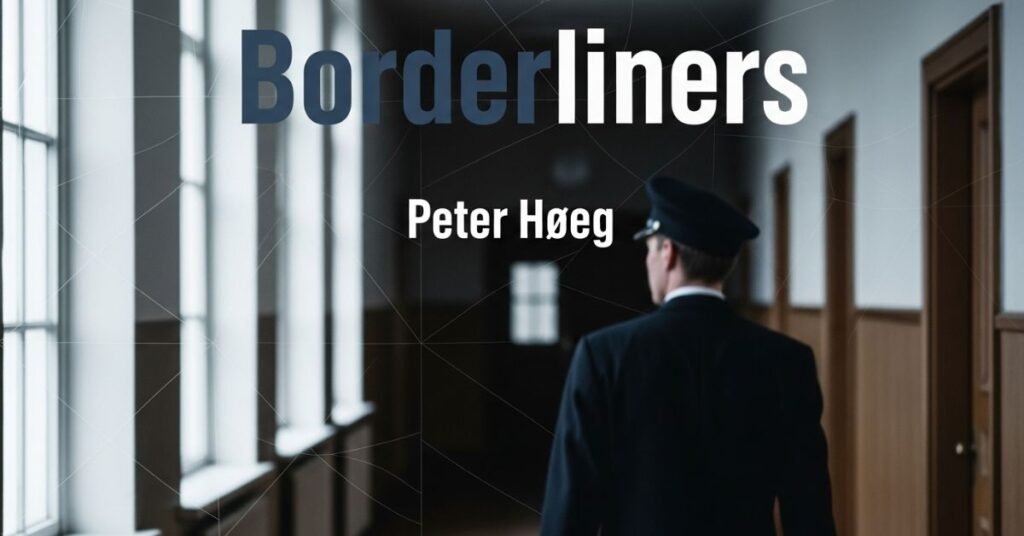
A boy named Peter Hansen recalls his fragmented and difficult childhood in Copenhagen, where he lived with foster parents after losing his own family. His memories are clouded by neglect, violence, and a sense of not belonging. He was often seen as a problem child, misunderstood by adults, and moved from place to place without stability. His life takes a sharp turn when he is placed at a peculiar institution, a school that presents itself as progressive and modern but is deeply rooted in strict systems of discipline and control. The school is not ordinary; it functions as a hidden experiment in time, behavior, and conformity. The children there are not chosen at random—they are all on the margins, “borderliners,” children who are not fully accepted by society and who carry traumas or struggles that make them vulnerable.
At the school, Peter meets two other children who will change his life—Katarina and August. Katarina is highly intelligent, tough, and secretive, carrying her own scars of a difficult past. August is fragile, deeply disturbed, and haunted by his previous experiences in institutions. Each of them, in their own way, has been shaped by suffering and abandonment, and yet together they begin to find fragments of belonging. The three become close, drawn to one another by an unspoken recognition that they are all outcasts, surviving in a place that seems designed to erase their individuality.
The school itself is harshly controlled by teachers who present a calm, almost scientific exterior. Lessons are built around precision, measurement, and the manipulation of time. Everything is carefully observed and categorized, as though the children are specimens rather than students. There is an eerie obsession with the concept of time—how it can be measured, stretched, compressed, and used to shape the children’s behavior. The children begin to suspect that the school is running experiments on them, treating them less as humans and more as test subjects in a hidden psychological project. Peter, Katarina, and August slowly piece together that the institution is not about education in the normal sense but about social engineering, a form of control disguised as learning.
Peter struggles to understand his place in this environment. He feels both a need to belong and a deep distrust of authority. His memories of violence and neglect return in waves, and he questions whether the world is designed to crush people like him. Katarina, however, pushes back against the system with fierce determination. She questions the teachers openly, challenges their rules, and tries to protect both Peter and August from breaking under the pressure. August, in contrast, suffers more and more, unable to withstand the weight of the school’s silent manipulation. His vulnerability makes him a target, and he teeters constantly on the edge of collapse.
The three children begin to secretly resist. They share their memories, their fears, and their hopes in stolen moments, creating a fragile refuge against the cold, calculating atmosphere of the school. They try to uncover the truth about the experiments and what the teachers are doing to them. Slowly, Peter comes to realize that the school is not just a place of education but a carefully designed system to break children like them—or to remake them into something the outside world finds acceptable. They are being stripped of their natural selves, measured into obedience, and their individuality is at risk of being erased.
The bond between the three becomes their only weapon. Through their friendship, they construct small acts of rebellion—skipping prescribed routines, sneaking outside, imagining freedom. These acts seem minor but in a place so strictly regulated, they represent a declaration of life. Peter finds strength in Katarina’s fire and learns to trust again, at least in her. August, however, becomes increasingly unstable. His inner wounds are too deep, and the weight of the system crushes him. His decline is painful to watch, and it serves as a brutal reminder of how fragile their fight for freedom is.
As Peter’s memories continue to unfold, he reflects not only on his time at the institution but also on the broader truth about society itself. He comes to see that the school is a mirror of the world outside—both are built on invisible systems of control, power, and measurement that crush those who live on the margins. His childhood, filled with violence and rejection, was not simply bad luck but part of a larger reality where the weakest are abandoned or reshaped by force. He begins to understand that the “borderliners” are those who live at the edge of what society deems acceptable, and that their fate is often decided not by kindness or fairness but by systems designed to break them.
The story of Peter, Katarina, and August does not resolve in triumph. Instead, it lingers in ambiguity and pain. Their friendship, as strong as it becomes, cannot fully protect them from the school’s control or from the wounds they already carry. The institution remains a looming presence, shaping their every move. Yet within this bleakness, Peter learns something essential: the possibility of human connection, even in the darkest circumstances. It is not a victory over the system but a survival within it, a recognition that solidarity and love can exist even when everything else is hostile.
By the end, Peter’s voice is one of reflection and haunting memory. He recalls the suffering of his childhood and the cruelty of the school, but also the fragile bond that tied him to Katarina and August. The experience marks him deeply, shaping his understanding of power, time, and what it means to exist on the margins. The story leaves him standing at the border between despair and survival, carrying the weight of what he has endured but also carrying the memory of connection that, however small, gave his life meaning in a world designed to erase him.
